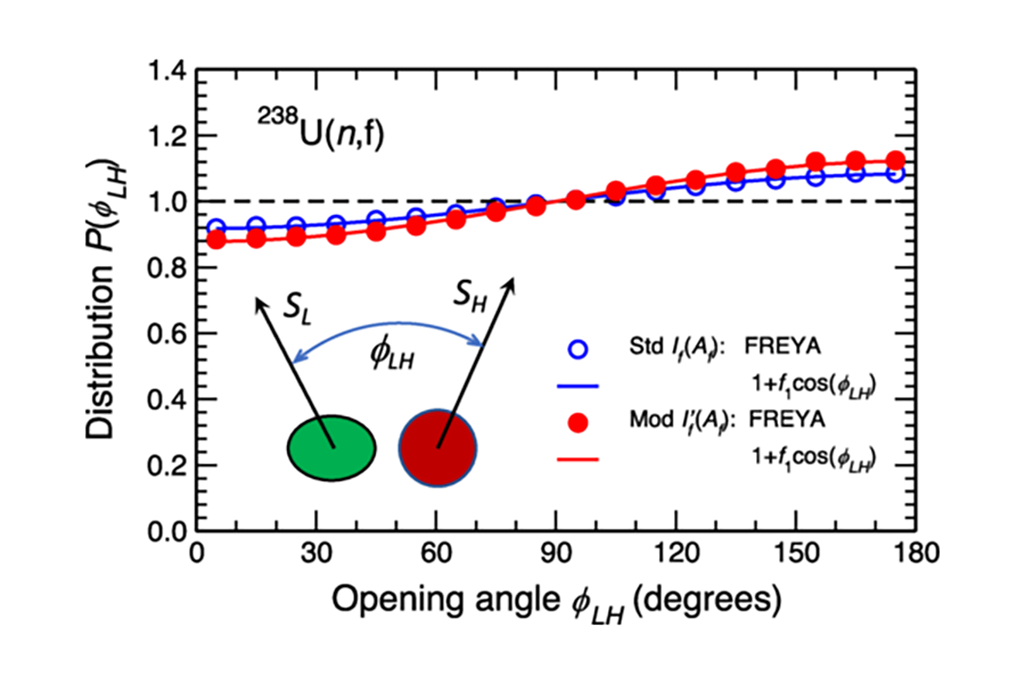Jørgen Randrup and Ramona Vogt, Generation of Fragment Angular Momentum in Fission, Phys. Rev. Lett. 127, 062502 (2021).
A recent analysis of experimental data [J. Wilson et al., Nature (London) 590, 566 (2021)] found that the angular momenta of nuclear fission fragments are uncorrelated. Based on this finding, the authors concluded that the spins are therefore determined only after scission has occurred. We show here that the nucleon-exchange mechanism, as implemented in the well-established event-by-event fission model FREYA, while agitating collective rotational modes in which the two spins are highly correlated, nevertheless leads to fragment spins that are largely uncorrelated. This counterexample invalidates the conclusion in [J. Wilson et al.] that uncorrelated spins must necessarily have been generated after scission (a potentious conclusion that would rule out all models that generate the fragment spins prior to scission). Furthermore, it was reported [J. Wilson et al.] that the mass dependence of the average fragment spin has a sawtooth structure. We demonstrate that such a behavior naturally emerges when shell and deformation effects are included in the moments of inertia of the fragments at scission.
Figure: The distribution of the opening angle ϕLH between the angular momenta of the two fission fragments from 238U(n,f) , as obtained by freya using either the standard moment of inertia, If (Af)=0.5Irig(Af) (dots) or the modified form depending on the shapes of the fragments at scission, I′f(Af) (open circles). Also shown are the corresponding lowest-order Fourier approximations, P(ϕLH)=1+f1cos(ϕLH).
See also: Petar Marević, Nicolas Schunck, Jørgen Randrup, and Ramona Vogt, Angular momentum of fission fragments from microscopic theory, Phys. Rev. C 104, L021601 (2021)
